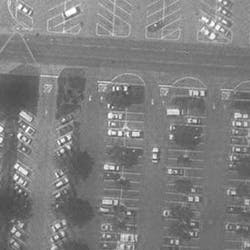While an optical telescope can be made larger by scaling up the whole optical system, perhaps even using a segmented mirror, this rapidly leads to a very large and heavy telescope. Another approach, pursued by researchers at General Dynamics Advanced Information Systems (Ann Arbor, MI) and the Lockheed Martin Advanced Technology Center (Littleton, CO), coherently combines the output of an array of small telescopes, resulting in a large effective aperture and yet a short length and low mass. Their wide-field Fizeau telescope, called the Star-9 for its nine apertures, is returning experimental data showing diffraction-limited operation.
The optomechanical design, assembly, and test of the testbed and its control system were undertaken by Lockheed Martin. General Dynamics supplied the phase-diversity image sensor used to feed error signals to the control system. A patent on the technology is held by three Lockheed Martin employees.
The array of 125-mm-diameter, f/15 collector telescopes that makes up the Star-9 is held in proper relative phase by extracting wavefront information from a pair of focused and defocused images-a method called phase diversity. An error signal is fed back to intermediate optics that correct for tilt and piston. The field of view of Star-9 is 1 µrad square, or 2000 × 2000 critically sampled pixels at the image plane; the measured root-mean-square wavefront error is 0.08 waves at 635 nm. The telescope image shown here was taken in a test bed with a scene generator that simulates low-Earth orbit in terms of resolution. Contact Rick Kendrick at[email protected].
